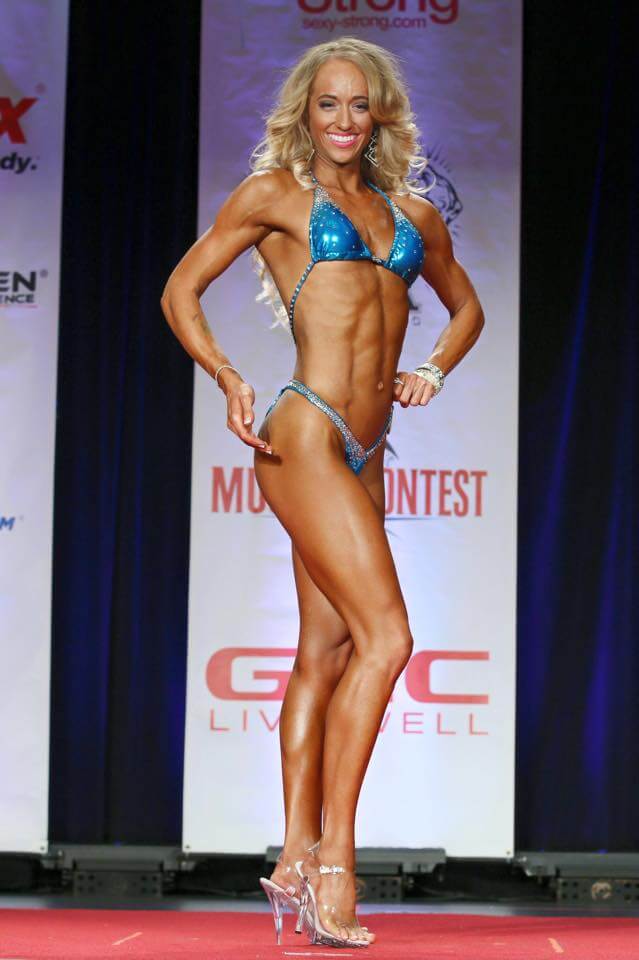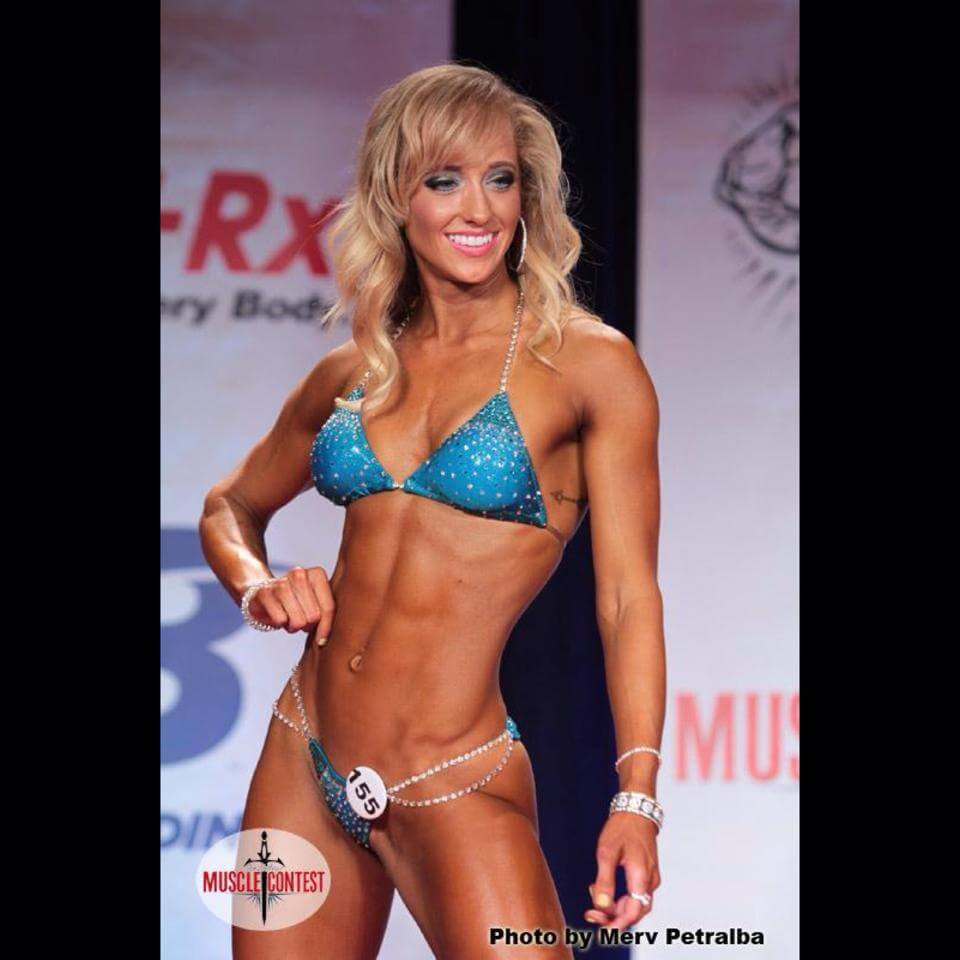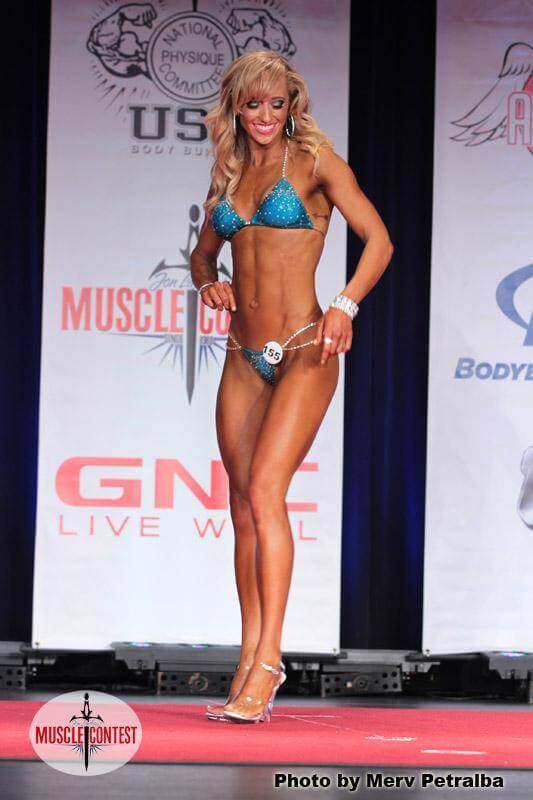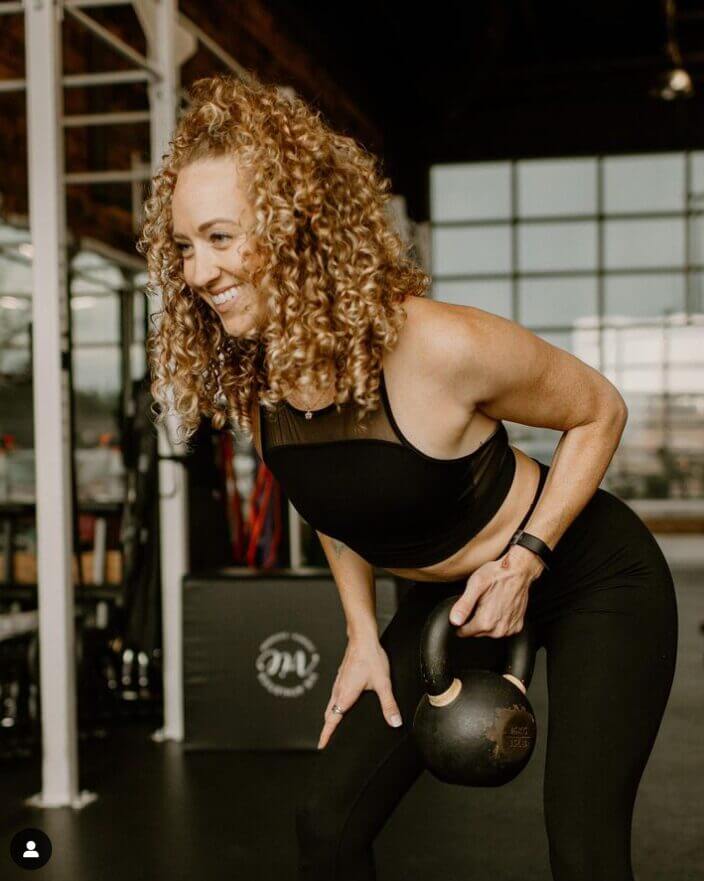Most fitness advice is based on male physiology, with tips that cater to 24-hour hormone cycles, higher testosterone levels and faster recovery.
As a lifelong athlete and personal trainer with over a decade of experience, I used to believe I should follow in the footsteps of the men who dominated gym spaces. And if I struggled? I assumed I just needed to white-knuckle it and push through. So I did.
But women’s bodies are different. And overriding our hormonal cues for too long can backfire, leading to fatigue, injuries and burnout. Trust me, I’ve been there.
Deprogramming societal expectations around what “healthy” looks like, as well as learning to work with my menstrual cycle instead of against it, has changed everything. I started training smarter, not just harder. And I’ve helped hundreds of female clients do the same.
Understanding the physiological and social differences that affect how women train, eat and recover is key to making real, lasting progress.
Women aren’t just smaller men; we experience different hormone patterns, build muscle more slowly, and recover at a different pace. And on top of that, we’ve been conditioned to eat less, fear lifting heavy, chase thinness, and critique our bodies at every turn.
This combination of understudied physiological differences and deep-rooted cultural conditioning shapes how women show up in the gym, how they fuel (or underfuel), and how they define success.
Whether you’re brand new to strength training or years into your fitness journey, the principles and tips in this article will help you train smarter, get stronger, and feel more at home in your body.
1. Adjust Your Rest and Recovery Based On Menstrual Cycle Phases

Most fitness programs ignore the menstrual cycle. But fluctuating hormone levels across the month affect strength, endurance, recovery, mood and energy. That’s why the standard “just push through it” advice, which is based on male physiology, doesn’t always work for women.
At the same time, while cycle syncing (matching workouts to each menstrual phase) has gained traction, it’s not something I follow or recommend for my clients.
That’s because most women, myself included, experience irregular cycles or symptoms that shift from month to month. Plus, perimenopause can begin as early as age 35, and about 25% of women have menstrual disorders. So a rigid, phase-based plan can feel more frustrating than empowering.
That said, I do believe in cycle awareness. Tracking your cycle and learning how your body responds is incredibly valuable. It helps you understand what’s typical in each phase (like when energy tends to rise or dip). And the more you observe your individual patterns, the better you can adapt your training, nutrition, and recovery to support yourself.
Here’s how each phase may affect your training…
Menstrual Phase: Days 1-5
Key facts: Estrogen and progesterone are at their lowest, which may lead to fatigue, low mood and decreased motivation. However, around Day 3, hormone levels begin to rise as the follicular phase starts to overlap.
Energy: Low.
Strength: Reduced coordination and endurance.
Recovery insight: Inflammation and prostaglandin release increase sensitivity to pain and reduce neuromuscular efficiency, making recovery from intense workouts slower. Support your body with sleep, hydration, and anti-inflammatory foods.
Follicular Phase: Days 1-16
Key facts: Estrogen rises, boosting motivation, stamina and recovery.
Energy: Rising.
Strength: Increasing, ideal for skill work and progressive overload.
Recovery insight: Rising estrogen enhances insulin sensitivity, boosts mitochondrial efficiency, and increases collagen synthesis, all of which improve recovery speed and muscle adaptation.
Ovulatory Phase: Days 14-16
Key facts: Estrogen and testosterone peak, which drives up coordination, strength and confidence.
Energy: Highest.
Strength: Peak performance potential.
Recovery insight: Increased estrogen improves muscle repair and central nervous system resilience. You may tolerate higher training volumes with reduced DOMS. Higher respiratory rate and pain threshold can also make high-intensity work feel easier.
Luteal Phase: Days 16-28
Key facts: Progesterone rises and then drops dramatically, leading to slower recovery and increased fatigue, especially in the week leading up to menstruation.
Energy: Stable early, drops late.
Strength: Moderate, with possible soreness and sleep disruption.
Recovery insight: Progesterone elevates core temperature and increases catabolism, making recovery from exercise slower and perceived exertion higher. Lower serotonin and dopamine may reduce motivation. Focus on sleep hygiene and reduce training intensity if symptoms spike.
Nutrition note: Caloric needs may increase by 100 to 300 calories per day.
How women experience each phase of their cycle can vary — and sometimes significantly — from month to month. That means the symptoms and patterns mentioned above aren’t guarantees, but possibilities. And for some women, ovulation may not occur at all in a given cycle, which can shift or blur the typical hormonal rhythm. So instead of treating the menstrual cycle like a strict schedule, I encourage women to use it as a flexible guide.
Personally, I track my cycle using Natural Cycles and train consistently year-round. But I give myself more grace during the late luteal phase, when my energy tends to plummet (which is a shift that research shows is common). However, I typically feel back to baseline once menstruation begins, especially if I’ve honored my body’s lower capacity during that premenstrual window.
Regardless of where you are in your cycle, I encourage you to take advantage of higher-energy phases (typically, the first half of the cycle) by leaning into strength gains and skill development. During lower-energy phases, shift toward mobility, moderate resistance or active recovery.
It’s also helpful to zoom out. Instead of tracking progress day to day or week to week, look at patterns over the course of the month.
2. Get The Right Pre and Post-Workout Nutrition

What you eat before and after a workout can have more of an impact than most women realize. Getting your timing right can be the difference between spinning your wheels and building lasting strength.
Below are the key guidelines I use with clients, and myself, to support strength gains, recovery and output.
Post-Workout Nutrition
Women are more likely than men to underfuel after workouts, whether due to low appetite, time constraints or outdated beliefs about “burning off” calories. But skipping this window can increase soreness and stall progress.
Protein is essential for muscle repair and growth. While post-workout nutrition matters for everyone, women have a shorter window of time to benefit from it. After exercise, the body is especially responsive to protein, but in women, this peak doesn’t last as long as it does in men.
This difference comes down to hormones. Estrogen helps stimulate muscle repair, but its levels fluctuate throughout the menstrual cycle and decline with age. When estrogen is low, recovery slows and it becomes harder to maintain or build muscle. Men, on the other hand, have more stable hormone levels and typically recover over a longer period (often lasting up to two hours post-workout).
For women, the ideal refueling window is closer to 30 minutes. Dr. Stacy Sims, a leading exercise physiologist and nutrition scientist, recommends eating 25-30 grams of high-quality, leucine-rich protein along with 30 to 40 grams of carbohydrates shortly after training (read her article on the topic here). After menopause, that protein target increases to at least 40 grams to support muscle health.
Note that as Michael explained in this article, you may need less protein than that, depending on the type of workout you’re doing. Additionally, while some experts (e.g., Sims) suggest that timing is important, recent studies suggest that total daily intake is more important than timing.
In my own training, I noticed a significant difference in muscle growth and strength gains when I started consistently prioritizing both protein and carbohydrates post-workout. I aim for 35 grams of protein and 60 grams of carbs after lifting to help me build muscle.
Pre-Workout Nutrition
Pre-workout nutrition is just as important. Sims recommends at least 15 grams of protein, but I encourage my clients to aim for 20–30 grams about an hour beforehand. This ensures there are enough amino acids circulating in the bloodstream to support muscle repair. For cardio workouts, pair your protein with 30 grams of carbohydrates to support stamina and blood sugar balance.
Ultimately, the goal is to have a steady stream of protein consistently throughout the day, with strategic spikes around your training to maximize muscle repair and growth.
3. Proactively Monitor and Respond to Signs of Low Energy Availability (LEA)
LEA occurs when your body doesn’t get enough fuel to support both basic physiological functions and the added demands of exercise. In simple terms, you’re burning more energy than you’re taking in, and your body starts to ration resources in response.
And, no surprise, women are especially susceptible to underfueling due to societal pressures around body size and calorie consumption.
LEA isn’t just about eating “too little.” It’s about not eating enough for your level of physical activity. Over time, this energy mismatch can lead to Relative Energy Deficiency in Sport (RED-S), affecting everything from hormone production to bone health, metabolism and mood.
Signs of LEA In Women



The symptoms of LEA aren’t always obvious. Some women stop menstruating or notice irregular cycles. Others experience constant fatigue, brain fog, anxiety, poor sleep and/or low libido.
Recovery feels slow, soreness lingers longer than usual, and performance may stall or decline (even if your training program is well-designed).
For me, LEA showed up as relentless fatigue and burnout. I spent years diligently tracking calories, cycling between deficits and surpluses (but favoring deficits for aesthetic goals). During the three years I competed in bodybuilding, I became accustomed to being underfed and overtrained.
When I stopped obsessing over numbers and started listening to my body, my energy, strength, performance, and mood all improved.
How to Calculate Energy Availability (EA)
One simple way to screen for LEA is to estimate your energy availability, using a formula such as:
Step 1: Calculate your fat-free mass (FFM):
Weight - Body Fat Percentage = FFM
Step 2: Calculate your energy availability (EA):
(Calorie Intake - Exercise Energy Expenditure) / FFM = EA
Step 3: See which threshold your EA number falls into:
- Optimal: 20.4 kcal/lb/FFM per day
- Moderate: 13.6–20.3 kcal/lb/FFM per day
- Low: under 13.5 kcal/lb/FFM per dayIf you don’t want to do the math yourself, use this calculator:
Energy Availability Calculator
Use these numbers as a general guide, not a diagnosis. Energy availability varies based on context, but consistently scoring below 13.5 cal/lb/FFM, especially with symptoms present, may indicate LEA. Always consider trends over time, not just a single calculation.
And keep in mind, these calculations are intended for athletes or frequent exercisers. Energy availability reflects the energy left over for vital functions after exercise. It’s not the same as total calorie needs, and it’s most relevant on training days. On rest days, since there’s no exercise energy expenditure, your EA may look “low” on paper, but your body isn’t under the same demand. What matters most is that over time, your body consistently receives enough fuel to support recovery, hormone balance, and metabolic health.
Rather than pushing harder when you feel off, take those signs seriously. Prioritize recovery, increase calorie intake (especially from carbs), and consider tracking symptoms. Under-eating doesn’t just slow results, it puts your long-term health at risk.
4. Prioritize Core and Pelvic Floor Training
The pelvic floor is a group of muscles at the base of the core that helps stabilize the spine, support pelvic organs, and regulate intra-abdominal pressure. While both men and women have a pelvic floor, women are significantly more likely to experience dysfunction — especially after pregnancy, during perimenopause, or as a result of chronic stress and posture patterns.
In my coaching work, I have yet to meet a postnatal client who didn’t have some level of pelvic floor dysfunction. Regardless of how someone delivers, I believe most women should expect to need some degree of pelvic floor rehab or corrective exercise.
But it’s not just postpartum women. Sedentary lifestyles (hello, desk jobs) and hormonal changes during menopause can also weaken the pelvic floor and surrounding tissues.
In fact, in the U.S., up to 25% of healthy, non-pregnant women report symptoms of pelvic floor disorders. One of the most common is urinary incontinence, which affects 35.3% of women, compared to just 4.4% of men.
Types of Pelvic Floor Dysfunction
Pelvic floor dysfunction generally falls into two categories:
- Hypotonic (underactive/weak): The muscles lack tone and strength, leading to issues like urine leakage, pelvic heaviness and/or poor core engagement.
- Hypertonic (overactive/tight): The muscles are overly tense and unable to relax, which can cause pain during intercourse, constipation, leaking, UTI-like symptoms and/or chronic hip and back tightness.
Underactive/Weak Pelvic Floor
If you want to strengthen an underactive pelvic floor, focus on movements like:
- Bird-dogs
- Glute bridges
- Quadruped hip circles
- Dead bugs
- Diaphragmatic breathing (exhale during the effort to help regulate pressure)
Overactive/Tight Pelvic Floor
Many women develop overactive pelvic floor patterns without realizing it, often from years of intense athletics, chronic bracing (“sucking in”), or prolonged stress.
I started doing competitive athletics at 13 years old and just never stopped. In my early 30s, despite never having been pregnant, I started experiencing leaking when I sneezed.
I was floored.
After researching and speaking with my OB/GYN, I learned that 20+ years of hard exercise, without enough focus on stretching and breathing, had led to a chronically tightened and overactive pelvic floor. Once I added post-workout breathing exercises and dedicated stretching, things began to improve, slowly but noticeably.
To help relax an overactive pelvic floor, try:
- Happy baby
- Cat cow
- Pigeon
- Deep squat holds
- Deep diaphragmatic breathing
If symptoms persist, a pelvic floor physical therapist can provide individualized assessment and support, whether or not you’ve given birth. These muscles deserve as much attention as any others in your training program.
5. Focus On Consistency Over Novelty

Fitness trends often try to sell women fast-paced, constantly varied workouts. While these formats can be fun and engaging, too much novelty can undermine long-term progress, especially when it comes to building and maintaining muscle — which is key for healthy aging and longevity.
This is one of the biggest challenges I see in my coaching practice, and one of the things women resist the most.
But here’s the truth: to build strength, your body needs progressive overload (a gradual increase in challenge through heavier weights, more reps, slower tempo, or greater range of motion). Without repeated exposure to increasingly challenging stimuli, your muscles won’t get the signal to rebuild or grow.
For women, consistency with progressive overload is even more important. Due to lower baseline testosterone and different anabolic hormone responses, women tend to build muscle more slowly than men. That doesn’t mean it’s harder to gain strength (women often outperform men in muscular endurance and recover more quickly between sets) but it does mean that random, constantly changing workouts won’t deliver the same payoff.
Programs that change too often — think daily circuits and random class workouts — may burn calories but often fail to build strength. These formats also make it hard to track whether you’re improving, since movements and intensity vary from week to week.
Instead, stick to the same structured strength program for 2-3 months at a time. Repeat foundational movements like squats, hinges, presses and rows, and focus on gradually increasing weight or reps. Accessory work and rep schemes can change (play with sets of 3-5 reps for strength or 10-15 for hypertrophy), but your core lifts should remain consistent long enough to allow adaptation.
This approach may feel less exciting, but it works. Try gamifying your progress using a fun tracking app like Hevy or Trainerize, or finding an accountability buddy or coach who can cheer you on.
Summary and Final Thoughts
Most training programs still operate under the assumption that men and women respond to exercise the same way. But research, and real life experience, tells a different story.
This doesn’t mean women need a completely different rulebook. It means training in a way that supports your physiology instead of trying to override it. That includes adjusting your workouts around your cycle when needed, refueling shortly after exercise, monitoring energy availability, supporting your pelvic floor, and committing to consistency over constant variety.
It also means challenging the cultural conditioning that pushes women to eat less, train to be smaller, and chase aesthetics over strength. That mindset not only stalls progress, it actively sets women up for long-term health issues. Under-eating and under-recovering make it harder to gain strength, protect your bones, and maintain muscle — especially as muscle mass begins to decline rapidly after age 30.
When women properly fuel for strength-based workouts, they don’t just get stronger, they improve bone density, balance hormones, boost mood, and reduce inflammation. And yes, aesthetic goals like fat loss and looking more “toned” become easier to achieve and sustain. Why? Because muscle increases your basal metabolic rate, meaning your body burns more calories at rest.
If you’re constantly trying to eat less to “stay lean” but aren’t building or preserving muscle, you’re working against yourself. Without muscle, your metabolism slows, your energy drops, and your body becomes more vulnerable to stress.
Progress takes time, so give yourself the support you need to stay encouraged for the long haul. And if the male-centered model hasn’t been working for you, it doesn’t mean you’re not disciplined enough; it means you need a training approach that works with your body, not against it.
When you do, results come more easily. They feel better, last longer, and happen with fewer setbacks.

Megan Looney is a multi-certified personal trainer and fitness nutrition specialist, and an award-winning writer with a journalism degree from San Diego State University. With 20 years of experience in both the fitness and editorial industries, she combines first-hand coaching with the latest in exercise and health science, helping people live better through writing that’s clear, credible and empowering.


